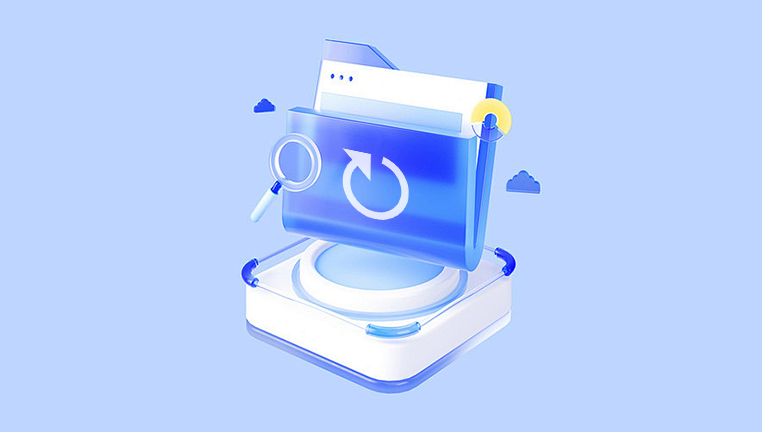Outlook, Microsoft’s email and personal information management application, is used globally by individuals, businesses, and institutions to manage communications, schedule appointments, and store important data. Outlook offers a highly structured email interface where users can create custom folders to organize their messages. However, accidental folder deletion is a common issue. Whether it’s a mistaken right-click or an attempt to clean up your mailbox gone wrong, losing an entire folder with vital emails can be devastating.
When you delete a folder, it doesn't always vanish permanently. In most cases, it’s moved to the Deleted Items folder, similar to how files on a computer go to the Recycle Bin. Outlook provides several built-in layers of protection to help recover deleted content.

There are typically three stages of deletion:
Soft Deletion: The folder is moved to the Deleted Items folder.
Hard Deletion: The folder is removed from the Deleted Items folder but may still be in the Recoverable Items folder.
Permanent Deletion: The folder is removed from all recovery areas—often after the expiration of retention periods or due to manual deletion.
Your recovery options depend on where the folder is within this hierarchy.
Common Causes of Folder Deletion in Outlook
Understanding why folders get deleted can help you avoid the issue in the future. Some common causes include:
Accidental right-click and deletion.
Attempting to move folders and dropping them into the Deleted Items folder.
Using rules or automation that mistakenly delete or relocate folders.
Shift+Delete action that bypasses the Deleted Items folder.
Synchronization errors in IMAP or Exchange environments.
User error during mailbox cleanup.
Method 1: Recover from Deleted Items Folder
This is the easiest and most common method. If you recently deleted a folder, it’s likely still sitting in the Deleted Items folder.
Steps:
Open Outlook.
In the left sidebar, scroll down to find the Deleted Items folder.
Click to open the folder.
Browse the contents to locate the deleted folder.
Right-click the folder.
Select Move Folder or Move > Other Folder.
Choose the destination folder (e.g., Inbox or any custom folder).
Click OK.
Things to Note:
Restores the entire folder with its subfolders and messages.
Works for Microsoft 365. Exchange, Outlook.com, and IMAP accounts with local caching.
Deleted Items are retained for a limited period, depending on settings.
Method 2: Use Recover Deleted Items from Server (Exchange/Microsoft 365)
If the Deleted Items folder has been emptied, but you're using a Microsoft 365 or Exchange account, you can still recover items from the server.
Steps:
Open Outlook.
Select the Deleted Items folder.
Click the Home tab on the ribbon.
Click on Recover Deleted Items from Server.
A window will appear listing recently deleted messages and items.
Look for emails from the deleted folder.
Select the items you want to recover.
Click Restore Selected Items, then click OK.
Limitations:
Folder structure is not restored—only individual emails.
Recovered messages go back to the Deleted Items folder.
You’ll need to create a new folder and manually move recovered emails.
Method 3: Recover from Archive or Auto-Archive Folder
If you’ve enabled archiving in Outlook, it’s possible the folder was automatically moved due to age or size limits.
Steps:
Open Outlook.
Go to File > Open & Export > Open Outlook Data File.
Locate the archived PST file (usually named archive.pst).
Open it and browse the folder list.
Search for your deleted folder in the archive.
What to Do Next:
If found, right-click the folder and move it back to your active mailbox.
If only the messages are present, recreate the folder and transfer them accordingly.
Method 4: Restore from Outlook on the Web (OWA)
Outlook Web App (OWA) sometimes allows for recovery even when the desktop app doesn’t.
Steps:
Log in to Outlook on the Web.
Open the Deleted Items folder.
At the top, click Recover items deleted from this folder.
Browse and select the emails you wish to recover.
Click Restore.
Tips:
This restores messages, not folders.
After recovery, messages appear in Deleted Items or Inbox.
Method 5: Check for Backup PST/OST Files
If you regularly back up your Outlook data or use an account with cached local data (like IMAP), you may have a usable PST or OST file.
Steps:
Locate your PST or OST backup (from an external drive or backup software).
In Outlook, go to File > Open & Export > Import/Export.
Choose Import from another program or file.
Select Outlook Data File (.pst).
Browse to your backup file and choose folders to restore.
Import the relevant data.
Benefits:
Restores entire folders and hierarchy.
Preserves message read/unread state, metadata, and attachments.
Method 6: Use an Enterprise Backup System (for Business Users)
Organizations using Microsoft 365 or on-premise Exchange often have automated backups in place.
Process:
Contact your system administrator or IT department.
Provide the name and approximate deletion date of the folder.
IT will restore the data using enterprise-level tools such as:
Veeam Backup for Microsoft 365
CodeTwo Backup
SkyKick Cloud Backup
Barracuda Backup
Once restored, the folder may appear in your mailbox or be exported as a PST file.
Method 7: Recover from OneDrive or SharePoint Integration
Some organizations sync Outlook attachments or folders with OneDrive or SharePoint.
Steps:
Visit your organization’s OneDrive or SharePoint site.
Go to the Recycle Bin.
Check for any synced Outlook folders or files.
If found, restore them.
What to Do if Folder is Not Recoverable
If none of the above methods works, and no backups are available, recovery may not be possible. However, consider these alternatives:
Search by Keywords: Try searching your mailbox for known subject lines or content that may have existed in the folder.
Check Sent Items or Archive: Sometimes messages are duplicated in Sent Items or forwarded elsewhere.
Use Email Recovery Software: There are third-party tools designed to recover Outlook data from damaged PST/OST files.
Preventative Measures to Avoid Folder Loss in Outlook
To reduce the risk of losing important folders, consider implementing these preventive strategies.
Enable Automatic Backups
Use Windows File History or OneDrive to back up PST/OST files.
Regularly export your mailbox to a PST file.
Avoid Using Shift+Delete
Always delete folders via right-click to ensure they go to Deleted Items first.
Train Employees (for Businesses)
Educate staff on folder management, archiving, and safe deletion practices.
Enable Mailbox Retention Policies
In Microsoft 365. configure retention policies to keep deleted items for 30 days or longer.
Use Outlook Rules with Caution
When creating rules, double-check that no folders are being deleted or moved unintentionally.
Archive Strategically
Store older emails in well-labeled archive folders to avoid cluttering your main mailbox.
Troubleshooting Folder Recovery Issues
You may encounter problems during recovery. Here’s how to handle them.
Folder Appears Empty
Check filters or views.
Switch between “Show all mail” and “Unread only.”
Messages Are Recovered Without Folders
Manually create a new folder.
Drag and drop the recovered messages into the recreated structure.
Missing Folder Not in Recoverable Items
Confirm the deletion date.
If the retention window (typically 14 to 30 days) has expired, recovery isn’t possible via Outlook’s tools.
Differences in Folder Recovery Across Account Types
What to Tell Your IT Admin (If You Need Help)
When asking your IT administrator for recovery assistance, be prepared with the following details:
The name of the folder.
The email account it was associated with.
The approximate deletion date.
Any important keywords within the folder’s emails.
Whether you’ve already tried manual recovery steps.
Outlook Recovery Tools and Their Capabilities




